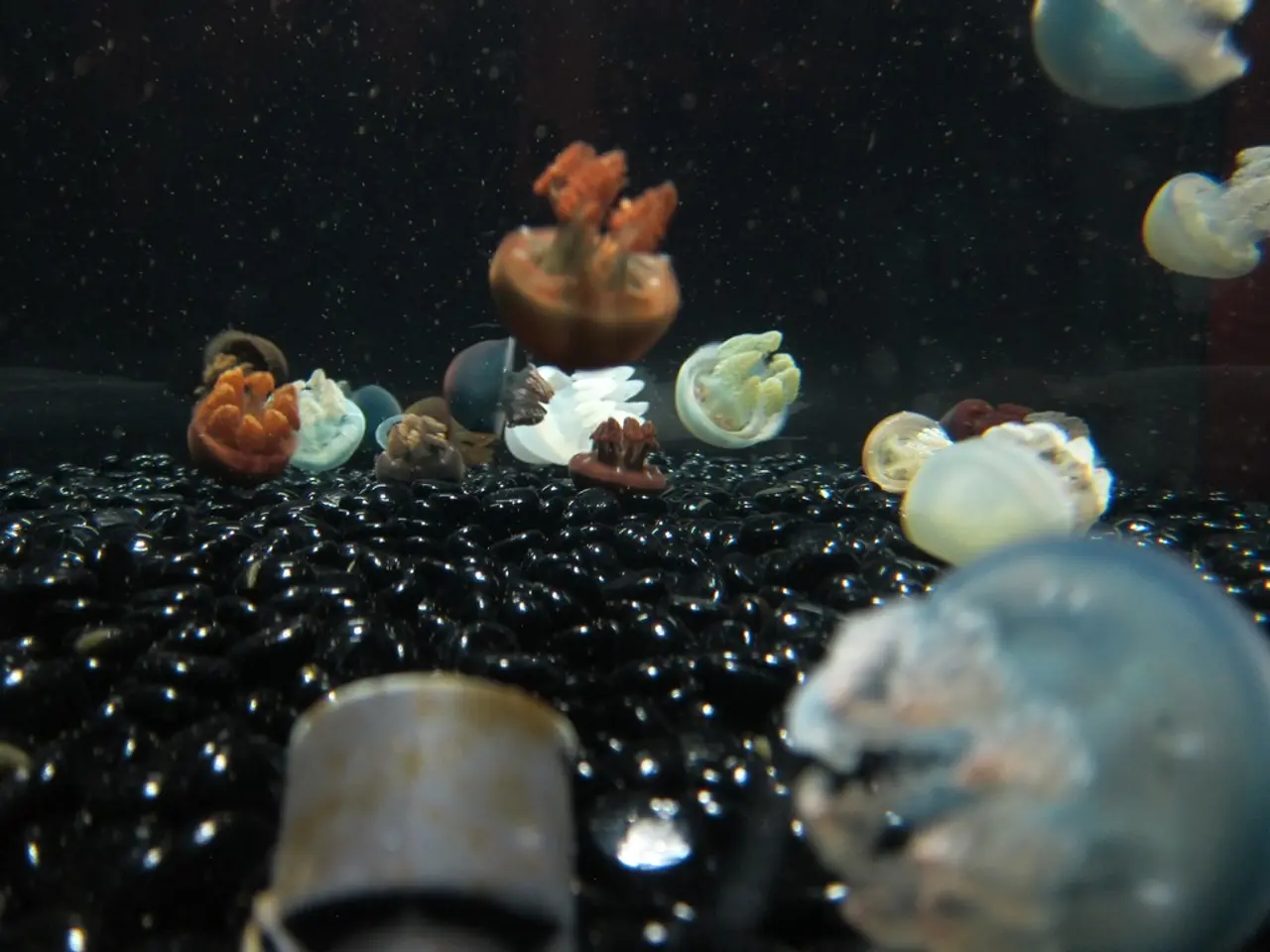Jellyfish invade coastlines, forcing closure of nuclear power plant: jellyfish predicament
In the heart of Geneva, Switzerland, the international community is gathered for the Global Plastics Treaty (INC-5.2) negotiations, scheduled to conclude on August 14, 2025. The treaty aims to address the global plastic pollution crisis, a significant factor in the growth of jellyfish populations.
The European Union is advocating for provisions to phase out harmful plastic products, promote environmentally sound management of waste, and establish a legally binding instrument to end plastic pollution. The negotiations also focus on creating a comprehensive agreement that addresses the entire life cycle of plastics, from production to disposal.
However, the talks do not specifically target reducing jellyfish populations. While reducing plastic pollution can indirectly benefit marine ecosystems, including species like jellyfish, by reducing habitat pollution and entanglement, there are no reported measures that directly address this issue.
The progress of these negotiations is not very encouraging, with no immediate solutions to the increasing jellyfish populations in sight. Jellyfish, lacking a heart and brain, are not affected by human emotions or empathy. Yet, their growing numbers have become a concern, with beach-loving tourists perceiving them as more numerous.
Recent reports indicate that jellyfish have been invading the Mediterranean and other oceans, clogging filter drums at a nuclear power plant in Gravelines, northern France. This phenomenon could potentially be linked to human activities, such as overfishing and plastic waste disposal, which promote jellyfish growth.
It is estimated that nearly 10 million tons of plastic are thrown into the water each year, providing supports for jellyfish growth and development. This plastic waste serves as a vector for spreading jellyfish throughout the world's seas.
As the negotiations continue, it is crucial to remember that the planet's oceans are facing numerous threats, and addressing plastic pollution is just one step towards preserving marine ecosystems. The symbolic interpretation of jellyfish as a representation of the planet's boiling, anxious turmoil serves as a reminder of the urgent need for action.
In the meantime, the potential of jellyfish as a long-term resource for certain food products, such as jellyfish salads, offers a glimmer of hope. However, the priority remains the protection and preservation of our oceans and the diverse marine life they support.
[1] European Commission. (2025). European Union Proposals for the Global Plastics Treaty. Retrieved from https://ec.europa.eu/environment/circular-economy/plastics/global_en.htm [2] United Nations Environment Programme. (2025). Global Plastics Treaty Negotiations. Retrieved from https://www.unep.org/plastics-treaty/ [3] National Geographic. (2025). The Rising Tide of Jellyfish. Retrieved from https://www.nationalgeographic.com/environment/ocean-plastic/jellyfish-ocean-plastic/ [4] BBC News. (2025). Jellyfish Clog Nuclear Power Plant Filters. Retrieved from https://www.bbc.com/news/science-environment-61334619 [5] World Wildlife Fund. (2025). The Impact of Plastic Pollution on Marine Life. Retrieved from https://www.worldwildlife.org/threats/plastic-pollution
- The European Union's proposals for the Global Plastics Treaty advocate for phasing out harmful plastic products, promoting environmental science, and establishing a binding instrument in the field of climate-change and industry.
- The Global Plastics Treaty negotiations, scheduled to conclude on August 14, 2025, are focusing on creating a comprehensive agreement in the realm of data-and-cloud-computing and technology, addressing the entire life cycle of plastics.
- The negotiations do not specifically target reducing jellyfish populations, but by promoting environmentally sound management of waste, the treaty aims to indirectly benefit marine ecosystems, including species like jellyfish.
- Reports indicate that jellyfish, despite lacking a heart and brain, have become a significant concern in the field of general-news, with beach-loving tourists perceiving them as more numerous due to human activities like oil-and-gas extraction and improper waste disposal.
- As the discussions on policy-and-legislation progress, it's important to remember that the planet's oceans are facing numerous threats beyond plastic pollution, necessitating the focus on education-and-self-development and personal-growth for mindful decision-making.
- The increasing jellyfish populations could potentially be linked to human activities, and their impact on food-and-drink industries is understudied, with some exploring the possibilities of cooking and consuming jellyfish as a part of environmental-science and lifestyle changes.
- According to recent studies, nearly 10 million tons of plastic are thrown into the water each year, making it a significant factor in the growth of jellyfish populations, an issue that highlights the interconnectedness of the finance sector and energy consumption.
- In an effort to preserve marine ecosystems, the priority remains the reduction of plastic waste, which requires the cooperation of the industry, finance, and politics, as well as the general public's participation in recycling and proper disposal methods.
- The UN Environment Programme and European Commission have made resources available, such as reports [1], [2], and [5], for understanding the implications of plastic pollution on marine life and the proposed solutions in the Global Plastics Treaty negotiations.
- National Geographic [3] and BBC News [4] provide further insights into the growing presence of jellyfish in various oceans, including potential impacts on coastal communities and infrastructure like nuclear power plants.




